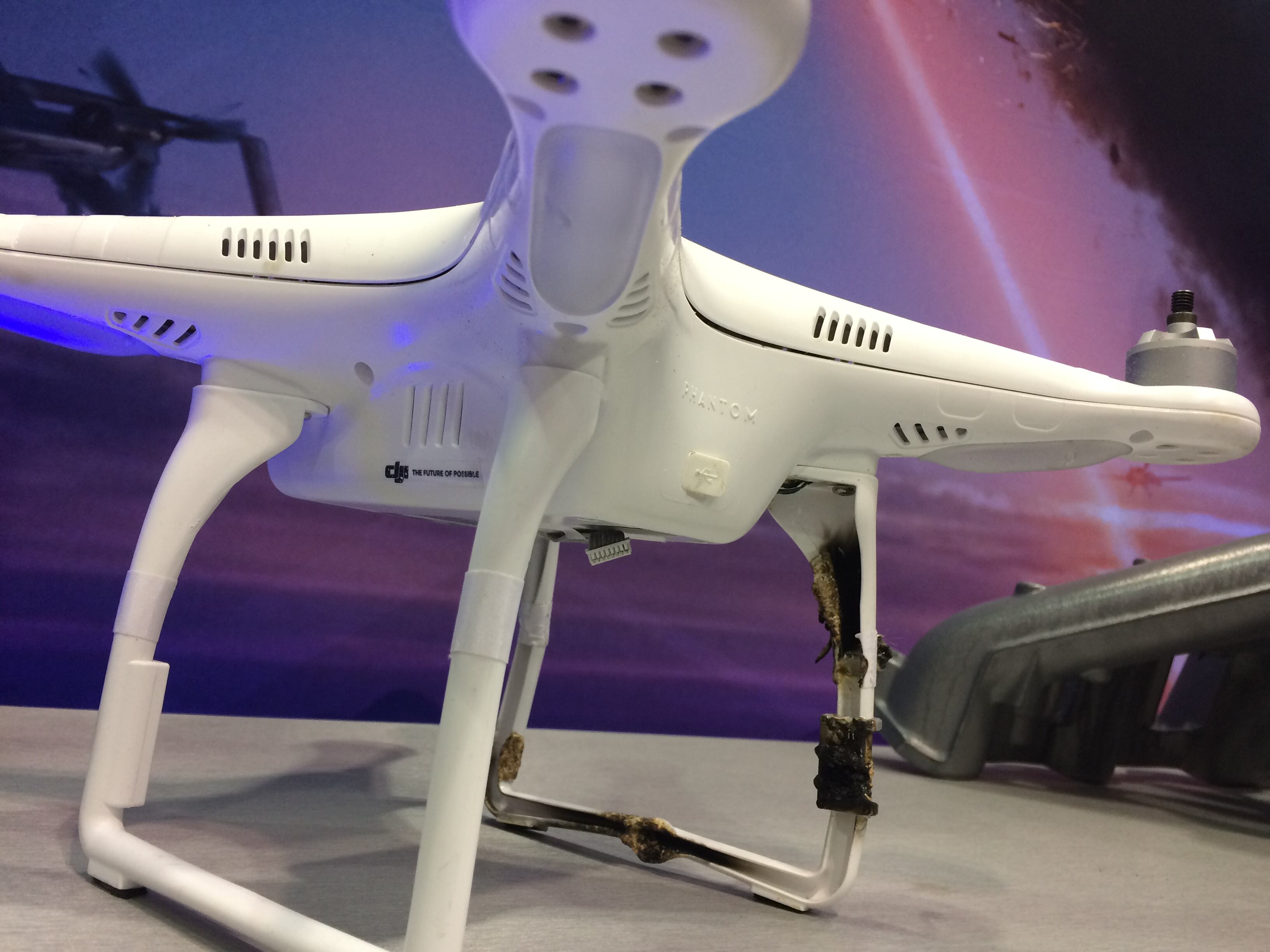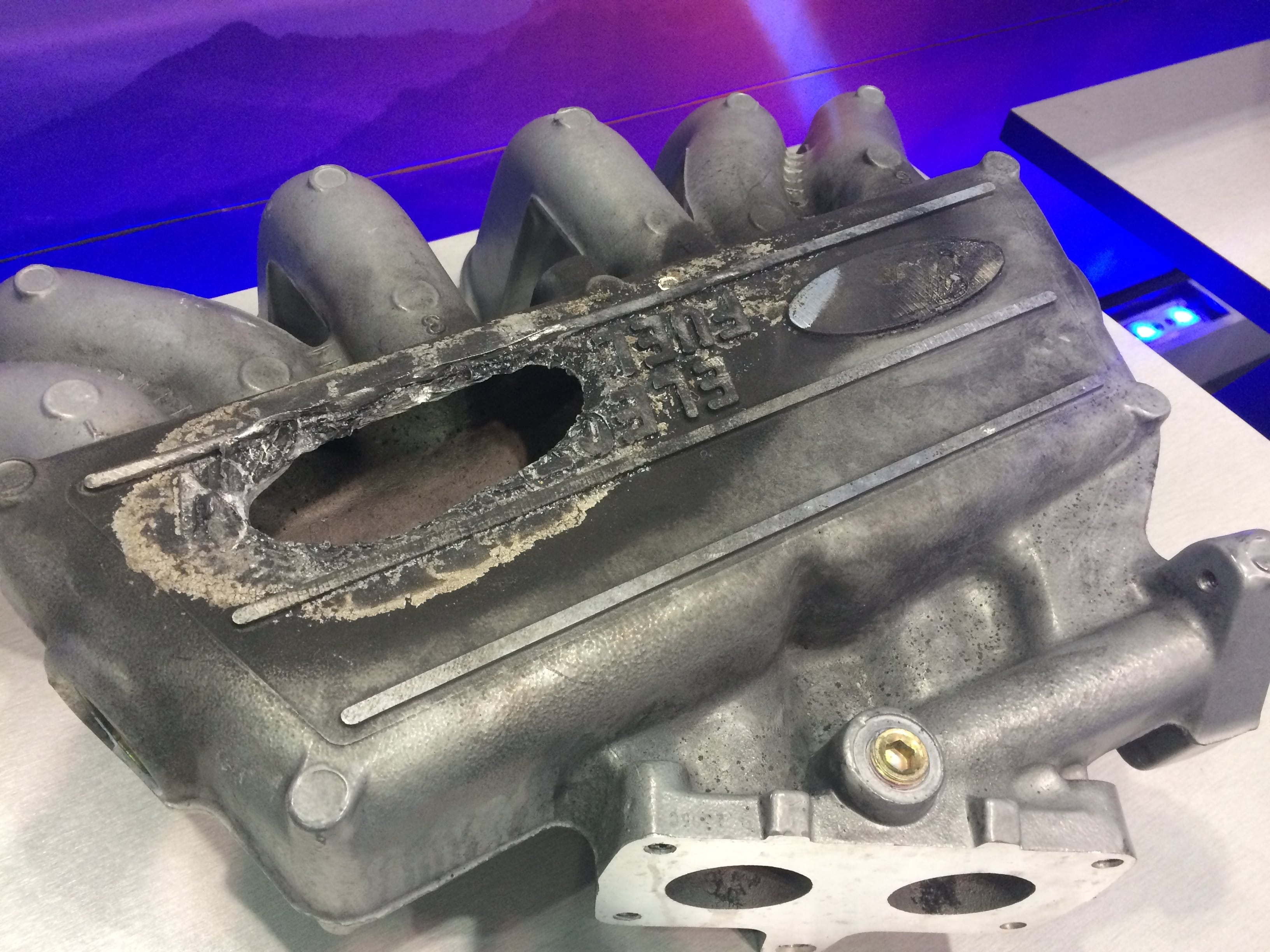HUNTSVILLE, Ala. - Developing directed energy to be used as laser weapons on a variety of platforms has been a huge priority for the Defense Department. It's fortunate therefore that technology has reached a point where lasers aren't just a cool, futuristic concept but will be vital in future military operations and war.
Military officials, both at the Space and Missile Defense Symposium this month and at the Army's Space and Missile Defense Command at Redstone Arsenal, Alabama, stressed how important developing directed energy was for the US military's future.
Officials believe ultimately employing lasers will dramatically decrease the cost of firing shots. Missiles, rockets, artillery and mortars would all ultimately cost far more than shooting with a laser and, with the proper power source, laser weapons would never run out of ammunition.
Missile Defense Agency Director Vice Adm. James Syring told an audience at the symposium that directed energy is "where we are going. It's not a hope. This is what we are doing. I view it as vitally important for the future."
Army Advances On Target
The Army has made significant progress in recent years with its laser weapon demonstrators and has plans to migrate more powerful lasers onto smaller platforms in the near term.
At the beginning, in 2005, the Army partnered with the High Energy Laser Joint Technology Office as well as the Air Force and the Navy to develop a high-power, solid-state laser, gradually reaching 100 kw, which was demonstrated in a laboratory, Adam Aberle, who leads the Army Space and Missile Defense Command's high energy laser technology development and demonstration, told Defense News in an interview at Redstone on Friday.
Then, in 2006, the Army started the High Energy Laser Tactical Demonstrator (HEL TD), which was a beam control system on a Heavy Expanded Mobility Tactical Truck (HEMTT), the largest vehicle in the Army inventory.
"The desire at that point in time was to develop this 100 kw laser, develop the beam control system and then, some time in the future, they would marry them up together and we would mount them on a truck," Aberle said. "Well, we realized in the process that the solid-state laser technology was not as mature as we would have liked."
The successfully demonstrated 100 kw laser was so big the Army knew it couldn't get it on a truck, Aberle said. So the Army instead purchased a 10 kw specialized commercial-off-the-shelf welding laser and integrated it onto a HEMTT. This program became known as the High Energy Laser Mobile Demonstrator (HEL MD). Boeing did the integration work.
With that, Aberle said, "we actually had a beam control system with a reasonable power laser to demonstrate that we could affect targets at reasonable range." Testing of HEL MD began in 2010 and was completed in 2014.
HEL MD testing was done at White Sands Missile Range, New Mexico, where the Army shot down targets in flight to include class 2 unmanned aircraft systems and 60 mm mortars.
The Army also tested the laser at Fort Sill, Oklahoma, during a maneuver fires integration experiment in April where the primary targets were class 1 quadcopter UAS as well as ground targets like simulated ground stations and ammunition points.
"We are now on the verge of receiving a 60 kw [Robust Electric Laser Initiative] RELI laser and we are going to marry that up with the old HEL TD beam control system on the HEMTT," Aberle said.
And that becomes the High Energy Laser Mobile Test Truck (HELMTT).
The Army expects to receive a 60 kw laser from Lockheed Martin for its HEMTT in the second quarter of fiscal 2017.
The Army began an effort this year called the High Energy Laser Tactical Vehicle Demonstrator (HEL TVD) to get a 100 kw laser on a Family of Medium Tactical Vehicles (FMTV) truck.
The service plans to release a request for proposals from industry this fall -- or early next fiscal year -- to build a 100 kw integrated prototype laser weapon system on the truck, Aberle said.
The effort is directly in line with a request from the field to get a laser on something less bulky than a HEMTT. Ideally the warfighter wants the laser on a combat vehicle like a Stryker or a Bradley class vehicle. The FMTV meets a "brigade and above" capability, Aberle noted.
HEL TVD will be demonstrated in fiscal 2022, according to a slide shown at the symposium during Syring’s speech. It is being developed in response to a Capabilities Development Document for the Army’s Indirect Fire Protection Capability, Increment 2-Intercept (IFPC Inc. 2-I) requirements. The system is being developed to first counter UAS and cruise missile threats and will then be upgraded to counter rockets, artillery and mortars.

Lockheed Martin tested a 30 kw laser weapon against a small unmanned quadcopter hitting the UAS squarely in an intended area. The intent was to take out a camera on a UAS rather than the entire aircraft. The company displayed the damaged UAS at the Space and Missile Defense Symposium in Huntsville, Alabama, August 16 through 18.
Photo Credit: Jen Judson/Staff
While that effort is farther afield, the HELMTT will begin testing in fiscal 2018 with plans to return to White Sands where it will attempt to defeat mortars from 60 mm to 120 mm. The system will also be tested against 122 mm rockets and various UAS.
The Army still wants a 100 kw laser at the end-game, but a weapon integrated onto something like a Stryker with a 50 or 60 kw laser could defeat a number of slower targets such as UAS, Aberle said.
"We have developed concepts for a 30 to a 50 kw system with an appropriate beam control system on a Stryker platform, which is very capable against unmanned air systems," he said, but "it is not going to be really capable against the harder targets that have very short times of flight but, for a UAV flying around, a 30 to 50 kw system is very practical to negate that threat."
Lt. Gen. David Mann, the Army’s Space and Missile Defense Command commander, stood up in the audience during the symposium to note, among other air-and-missile defense priorities, that directed energy was very high on the list and has caught the attention of Pentagon officials and members of Congress. He added when he briefed the Army vice chief of staff on directed energy, as part of a wider briefing in July, the vice chief specifically asked for a follow-up, information paper on directed energy.
Missile Defense Agency Wades Back In
Syring told the audience at the symposium last week that he’s normally hesitant to bring slides when he speaks, but he brought several including where the agency and the services are headed in directed energy technology efforts and where it should be.
The agency needs directed energy "for two purposes," he said. "We need it for discrimination and we need it for maturation for an eventual boost-phase defense program."
MDA has said often that getting after threats in their initial boost phase is a big priority for future capability.
"That is why we are pursuing the technology in trying to mature, not just the technology, but drive the size and weight down where we can start to think operationally about what that means," Syring added.
MDA has experimented with laser technology in the past but those programs working to develop such capability were shelved. Yet MDA has learned a great deal from past efforts. The Airborne Laser program and Boeing’s Phantom Eye were "critical to prove high-altitude endurance and measurement of optical tracking and everything else that it did," Syring said.
But now that the Army and other services are seeing more success with higher-powered lasers and are learning more about atmospheric conditions and other elements needed to be successful, MDA is getting back into the pool to develop technology itself.
MDA will be conducting a lot of tests of lasers on Reaper UAS over the next few years, according to Syring.
This will lead to MDA eventually funding in the budget a Low-Power Laser Demonstrator out in the 2021 time period, he said, "which will allow us to get, at altitude, a hopefully higher power laser to demonstrate discrimination and prototype, boost-phase defense in terms of lower power levels but being able to test that at altitude."
MDA is "pursuing, within laboratory infrastructure, a fiber-combined laser and DPALS [Diode Pumped Alkali Laser System], but we have now opened this up to industry," for ideas and concepts and other technologies, Syring said.
What industry brings to the table will drive MDA’s decision point "in a few years, I’d say in the ‘18 time period, to downselect on a path" for its Low-Power Laser Demonstrator, he said.
"You will see a sort of multi-pronged, 'let’s mature industry concepts and see what comes out of the lab.' At some point where does that merge together and what technology do we pick to go demonstrate?" Syring said.
Jen Judson is an award-winning journalist covering land warfare for Defense News. She has also worked for Politico and Inside Defense. She holds a Master of Science degree in journalism from Boston University and a Bachelor of Arts degree from Kenyon College.






